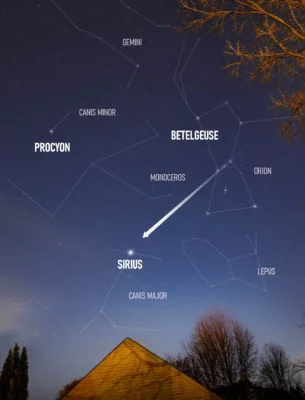The phrase, the ”dog days of summer,” is often used to describe the hot and sultry summertime weather. It’s not just a general phrase, though; there are official dates marking the start and end of the “dog days”! And the name isn’t poking fun at our panting four-legged friends. The phrase has deeper roots in history than you may expect.
The Origins
The term goes back to ancient Egyptian astrology in the late Hellenistic period, as a star called Sirius would rise over the eastern horizon each day just before sunrise during July and early August.
Sirius, derived from the Greek word meaning scorching, is the brightest star in the night sky, but it was also known as the “Dog Star” because it resides in the constellation Canis Major — the Greater Dog.

When Sirius returned as a night star, the highly anticipated annual flooding of the Nile River would soon occur, the result of the rains on the Ethiopian Highlands associated with the yearly monsoon. The Greeks noted that when the star was above the horizon during the daylight hours, heat, drought, and sudden thunderstorms would often occur.
With Sirius being in conjunction with the Sun during July, the ancients reasoned that the light given off by Sirius during the day would contribute to the Sun’s heating of the ground. Hence, the dog days of summer were defined as being the forty days running from the third day of July each year through the eleventh day of August, centered upon the alignment of the Dog Star with the Sun back in ancient times.
Wisconsin’s Dog Days
In Wisconsin, the hottest time of the year is in mid-July, as indicated by the statewide averaging of the daily temperature data obtained from over 365 observing stations since 1893. Statewide, the highest average daily maximum temperature is approximately 82 degrees Fahrenheit, occurring most often on July 19. Of course, Wisconsinites know that summer’s heat isn’t bound within “the dog days of summer,” and that waves of extreme heat can occur as early as May and as late as September.
This is a product of the Wisconsin State Climatology Office. For questions and comments, please contact us by email (stclim@aos.wisc.edu) or phone (608-263-2374).